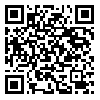Volume 12, Issue 7 (10-2012)
Iranian Journal of Medical Education 2012, 12(7): 537-545 |
Back to browse issues page
Download citation:
BibTeX | RIS | EndNote | Medlars | ProCite | Reference Manager | RefWorks
Send citation to:



BibTeX | RIS | EndNote | Medlars | ProCite | Reference Manager | RefWorks
Send citation to:
Yadegari S, Hosseini-sharifabad M. Using Surface Anatomy in Teaching The Anatomy of Upper Limb Vessels to Students of Allied Health Sciences . Iranian Journal of Medical Education 2012; 12 (7) :537-545
URL: http://ijme.mui.ac.ir/article-1-2099-en.html
URL: http://ijme.mui.ac.ir/article-1-2099-en.html
, mhosseini81@yahoo.com
Abstract: (13262 Views)
Introduction: Despite the abundant studies on teaching anatomy using cadaver, a few studies have documented the use of surface anatomy. Also, the majority of articles concerning human anatomy teaching have focused on medical student education and less attention has been paid to teaching anatomy to students of allied health sciences. Therefore, this study aimed to investigate the effect of teaching of upper limb vessels anatomy using surface anatomy on the anatomy knowledge of first year students of allied health sciences in Shahid Sadoughi University of Medical Sciences and their viewpoints on this teaching method.
Methods: This quasi-experimental study was performed on all students of radiology (N=33) and anesthesia technology (N=27) admitted in year 2010. Students were randomly divided into two experiment (30 individuals with surface anatomy method) and control (30 individuals with traditional method). In the experiment group, through the assistance of an instructor, students examined the surface landmarks of upper limb vessels in one of their peers. The traditional anatomy education was performed by didactic lectures using PowerPoint slide shows. At the end of course, through an exam, mean of students’ scores were compared between groups. The viewpoints of the students on surface anatomy teaching method in the experiment group were assessed by a valid and reliable questionnaire. Data were analyzed using descriptive statistics and Student t-test.
Results: Mean of exam scores in the experiment group (13.8± 4.9) and was significantly (t=2.165, P=0.034) more than in the control (10.8± 6.2). IN experiment group, most (67%) of the students had a positive viewpoint on surface anatomy education 57% rated surface anatomy teaching as a very interesting method, and 47% noticed that the surface anatomy of upper limb vessels enhanced their skill for future clinical practice.
Conclusion: The results showed that after teaching, compared to the control group, students' knowledge was more in the experiment group. Most students in the experiment group had positive attitude toward the teaching method applied. Therefore, the use of surface anatomy as a part of teaching anatomy in schools of allied health sciences is suggested.
Keywords: Anatomy Education, Students of Allied Health Sciences, Surface Anatomy, Upper Limb Vessels, Advance Organizer
Type of Study: Original research article |
Subject:
Teaching Methods
Received: 2012/04/14 | Accepted: 2012/08/18 | Published: 2012/10/15 | ePublished: 2012/10/15
Received: 2012/04/14 | Accepted: 2012/08/18 | Published: 2012/10/15 | ePublished: 2012/10/15
پرسشنامه [JPG 484 KB] (583 Download)
Send email to the article author
| Rights and permissions | |
 |
This work is licensed under a Creative Commons Attribution-NonCommercial 4.0 International License. |




